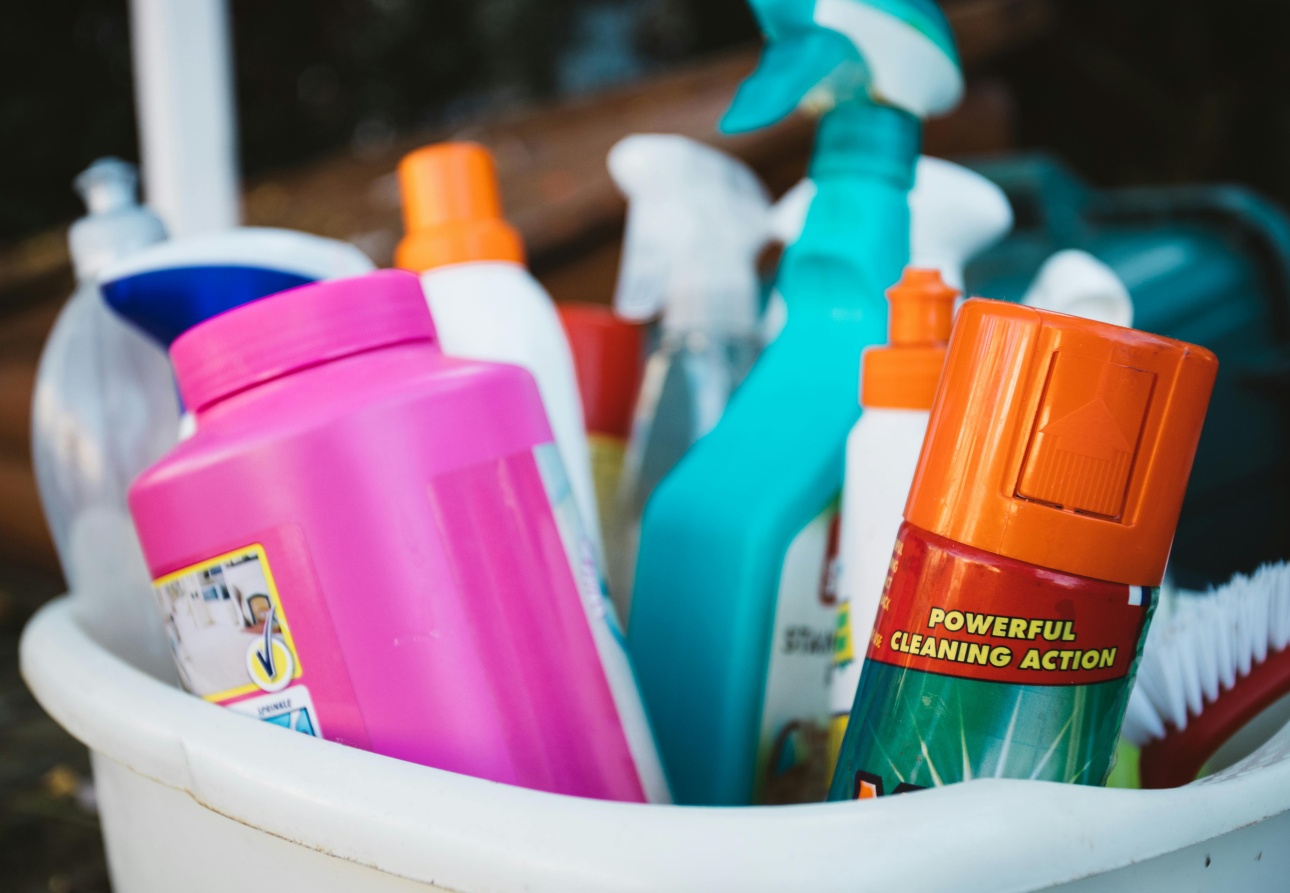
Most people want a clean healthy home and expend a lot of effort keeping it that way. Some common cleaning products pose risks you may not want to deal with. Here are some cleaners to keep out of your house.

Toxic Cleaning Chemicals To Avoid
Most commercial cleaners have toxic substances included in their formulas that affect human and pet health. Some of them are caustic and damage plumbing and furniture.
Labeling laws do not require all products included in cleaners to be listed. Or they may be listed using other names.
Ammonia
Ammonia is a colorless strong-smelling gas easily dissolved in water. It is found in nature and the human body. The small amount of ammonia produced by your body is essential for building proteins and complex molecules. Manufactured concentrated ammonia used in cleaning products is not the same and can be dangerous.
Uses. Breaks down grease and stains. Does not damage porcelain, tile, and countertops. Used in multiple all-purpose cleaners, window cleaners, drain, toilet, and bathroom cleaners, etc.
Health Effects. Irritates nose, throat, eyes, and lungs. Linked to liver and kidney damage.
Substitutes. Vodka to clean glass and windows. Vinegar and hydrogen peroxide for most other cleaning.
Achtung: Mischen Sie niemals Ammoniak und Bleichmittel oder bleichmittelhaltige Produkte. Die Kombination erzeugt giftiges Chloramin-Gas, das chronische Atemprobleme und sogar den Tod verursachen kann.
Chlorine (Bleach)
Chlorine gas was used during the First World War as a chemical weapon. Prolonged exposure can have serious effects.
Uses. Laundry products and bathroom cleaners, etc. Used industrially to bleach paper, make pesticides, and disinfect water systems and swimming pools.
Health Effects. Skin irritations and blisters. Coughing and chest tightness. Nausea and vomiting. Blurred vision.
Substitutes. Vinegar and baking soda. Soap and water and some extra scrubbing. Water filters to reduce chlorine in your drinking water.
2-Butoxyethanol
2-Butoxyethanol is a flammable colorless liquid used in solvents to remove grease and grime without too much scrubbing.
Uses. Paint, nail polish, nail polish remover, skin cleansers, stain removers, carpet cleaners, windshield washer fluid, rust remover, etc. Manufacturers are not required to list it as an ingredient.
Health Effects. Eye, nose, and throat irritation. Headache. Vomiting. Health Canada lists it as a toxic product.
Substitutes. Vinegar and newspapers for glass. Vinegar and baking soda for an all-purpose cleaner.
Triclosan
Triclosan is considered one of the worst toxic ingredients. It acts as a preservative and masks odors.
Uses. Cosmetics, body washes, toothpaste, soap, clothing, toys, antiperspirants, fascial tissues, etc.
Health Effects. Can be absorbed through the skin and mouth. FDA banned over-the-counter antiseptics containing Triclosan in 2016. It is an endocrine disruptor that interferes with hormone function.
Substitutes. Check the ingredients list for Triclosan (TSC) and Triclocarbon (TCC) and avoid the products.
Fragrance and Phthalates
One-third of the substances used in the fragrance industry are toxic according to the National Institute of Health and Safety. Manufacturers list them as trade secrets so they do not have to list them. Over 3000 chemicals are used in the fragrance industry.
Uses. Almost every cleaning product and beauty product with a scent contains fragrance, parfum, and/or phthalates. Also medical devices, ink, and adhesives. Usually on the list of ingredients and “Fragrance”. Air fresheners can contain cancer-causing benzene, formaldehyde, and other Volatile Organic Compounds (VOC).
Health Effects. Lower sperm counts, higher risk of breast cancer, fertility issues, and higher risk of asthma in children. Suspected endocrine disruptors.
Substitutes. Almost impossible to avoid fragrances and phthalates. Limit exposure by using fragrance-free products–including soaps, dryer sheets, and cosmetics. Reduce the use of plastic bottles. Read the list of ingredients on the labels. Look for Perfume/Fragrance, Parfum, phthalate, DEP, DEHP, or DBP. Use essential oils and fragrant plants to replace air fresheners.
Sodium Hydroxide (Lye or Caustic Soda)
Sodium hydroxide is a powerful and effective degreaser. It is a byproduct of the production of chlorine.
Uses. Soaps, oven cleaners, drain decloggers.
Health Effects. Strong corrosive products cause skin and eye irritation, breathing difficulties, nausea and diarrhea, and blood pressure problems.
Substitutes. Use the self-cleaning feature on the oven if there is one. Clear clogged drains with a plunger or plumbing snake. Mix baking soda with vinegar to use as a degreaser.
If you like our page please share with your friends & auf facebook.